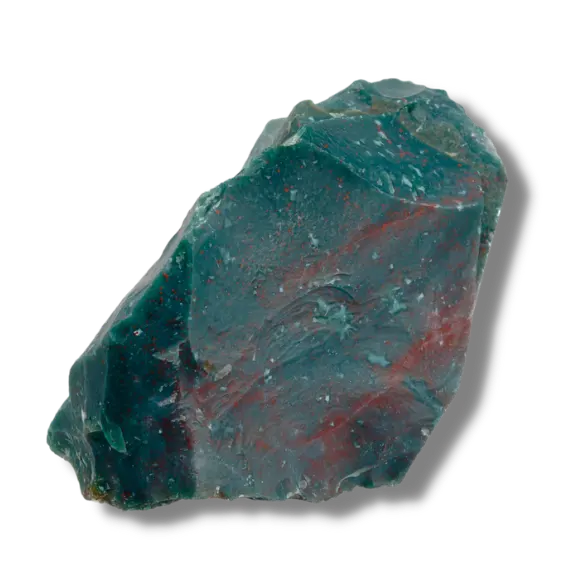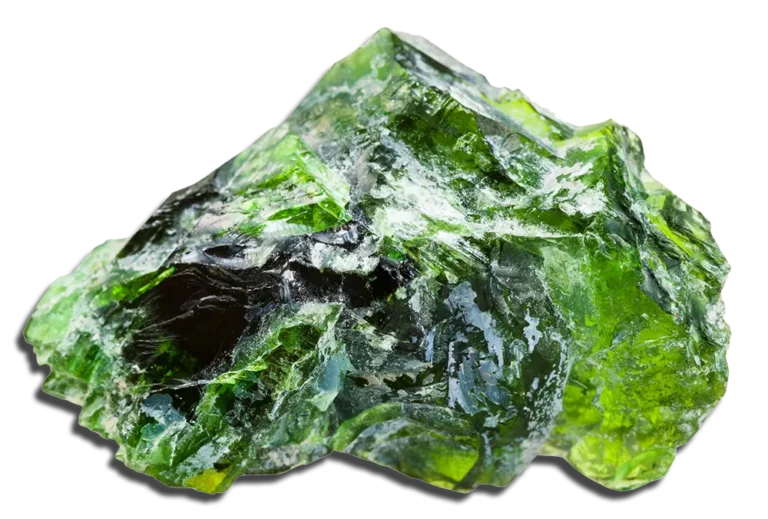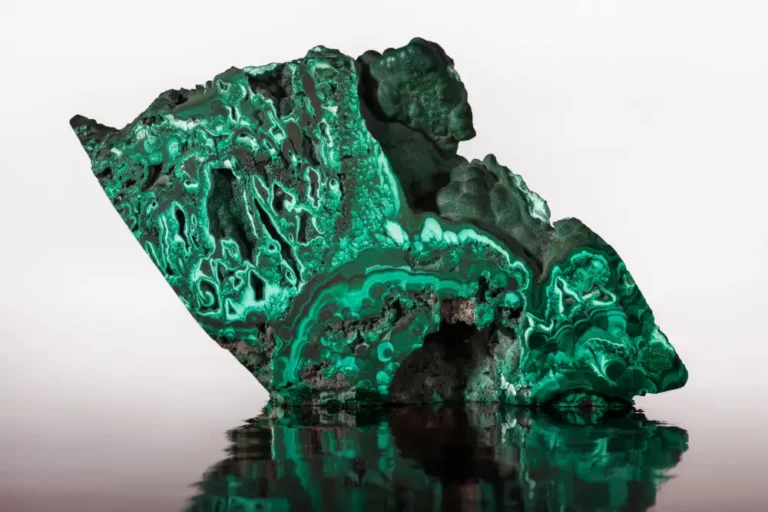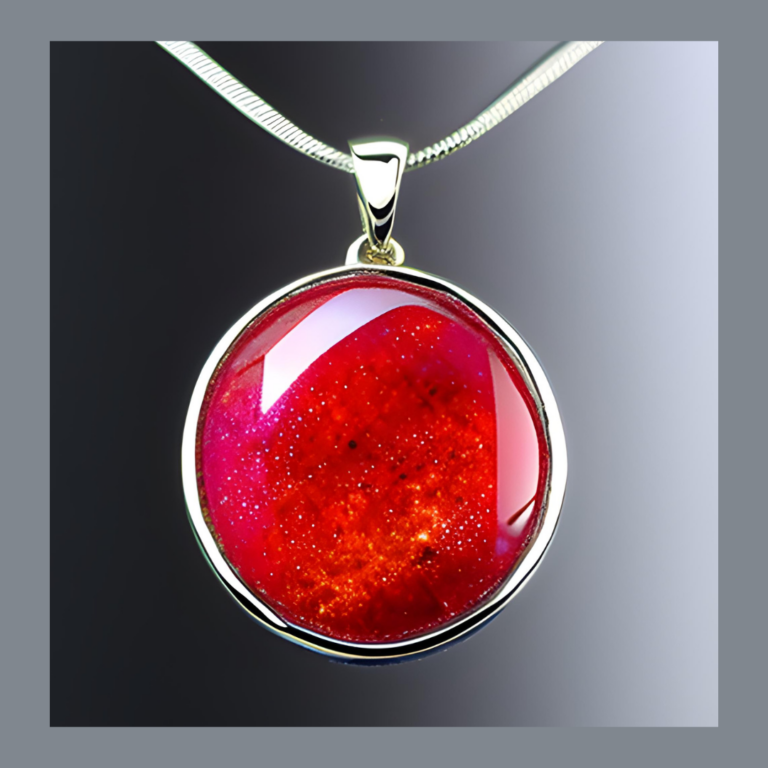Charoite Stone: Properties, Benefits & Meanings
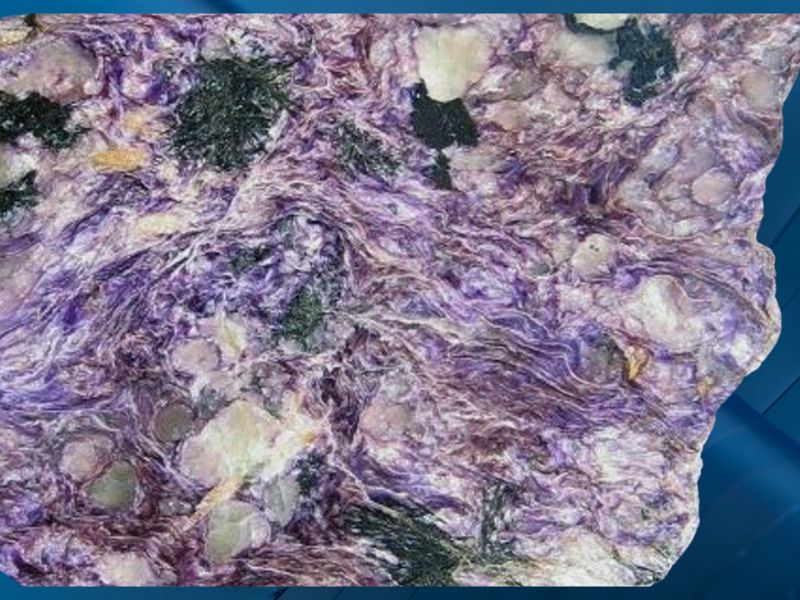
Charoite Stone Overview
Charoite Stone is a rare mineral found only in Siberian Russia. It was first discovered in the 1940s but remained relatively unknown until the 1970s, when it gained recognition for its striking beauty and unique properties. It is truly a remarkable gemstone.
Its deep purple color, with white and black swirls, makes it a stunning appearance that stands out from other gems. In addition, its unique patterns are formed by fibrous growth, which gives it a distinctive appearance that is hard to replicate.
This Stone is believed to have powerful healing properties that can help with physical, emotional, and spiritual well-being. In this blog post, we will explore the physical and spiritual properties of Charoite Stone in more detail.
What Is Charoite Stone?
Charoite Stone is a rare silicate mineral primarily found in the Murunskii Massif in Siberian Russia. It is composed of potassium, calcium, sodium, and strontium. Its unique swirling patterns of purple, white, and black characterize it. The Stone is named after the Chara River, located near where it was first discovered.
The Stone’s distinct patterns give it a unique appearance that is hard to replicate. Charoite Stone is considered a relatively new gemstone. It was not discovered until the 1940s and did not gain widespread recognition until the 1970s. Despite its recent discovery, the Stone has quickly become a favorite due to its striking beauty and unique properties.
How is Charoite Stone Formed?
Charoite Stone is a rare silicate mineral formed through a complex geological process. It is primarily found in the Murunskii Massif in Siberian, Russia.
It is formed in a hydrothermal environment, which means it is created by the action of hot water and other fluids that circulate through the earth’s crust. The process starts with the intrusion of magmatic fluids into pre-existing rock formations. These fluids carry dissolved minerals, including potassium, calcium, sodium, and strontium, which then crystallize and form Charoite Stone.
The unique swirling patterns seen in the Stone are created through fibrous growth. It also contains other minerals, such as microcline feldspar, aegirine, and tinaksite. These minerals can sometimes be found as inclusions within the Stone.
Physical Properties
| Mineral Group | Silicate mineral |
| Formula | (K,Sr,Ba)(Ca,Na)2Si4O10(OH,F)·H2O |
| Chemical Name: | Potassium Sodium Calcium Silicate Hydroxide Fluoride |
| Color | Purple with white, gray, and black swirls |
| Hardness (Mohs scale) | 5-6 |
| Refractive Index | 1.550-1.559 |
| Fracture | Irregular/uneven |
| Luster | Vitreous to pearly |
| Specific Gravity | 2.54-2.78 |
| Transparency | Translucent to opaque |
Etymology
Charoite Stone is named after the Chara River, located near where it was first discovered in the Murunskii Massif in the Siberian region of Russia. The Stone was first identified and described in the 1970s by Russian geologists and mineralogists, who named it after the river that runs through the area. The word “charoite” is derived from the Russian word “Chara,” which means “old man” or “teacher.”
Where is Charoite Stone Found?
Charoite is found only in one location in the world, the Murunskii Massif in Yakutia, Russia. The Murunskii Massif is a large geological complex in eastern Siberia that contains various minerals, including charoite. Small deposits have been found in India, but the major source is still Russia.
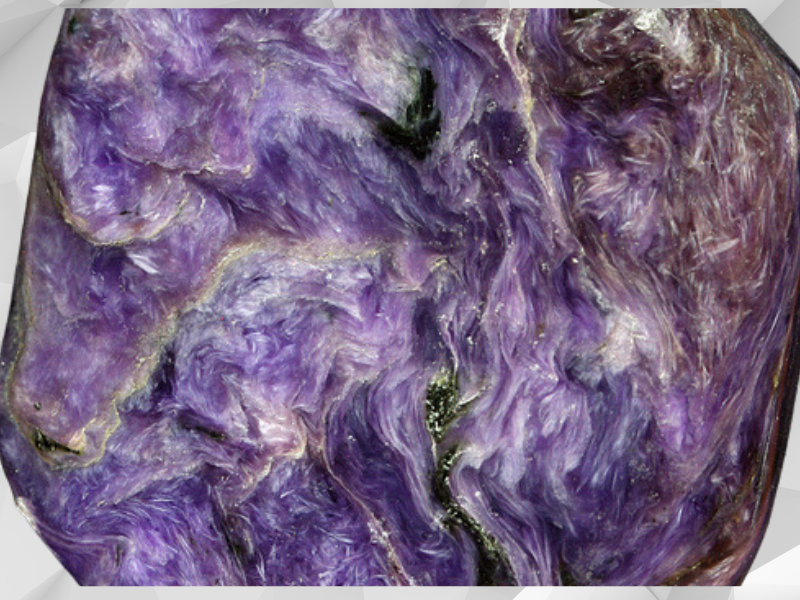
Charoite Stone Appearance
It is a unique gemstone with a distinctive appearance that sets it apart from other stones. It is characterized by its swirling patterns of purple, white, and black, which create a mesmerizing effect when viewed up close. The Stone’s swirling patterns are unique and hard to replicate.
The Stone is typically opaque or translucent, with a vitreous to pearly luster. Its colors range from light lavender to deep purple, with white, gray, and black swirling throughout the Stone. The Stone’s colors and patterns can vary depending on the quality and size of the Stone.
The Stone can be found in various shapes and sizes, ranging from small tumbled stones to large, polished cabochons. It is also a popular choice for jewelry, often set into rings, pendants, and other adornments.
Varieties of Charoite Stone
Charoite Stone is a relatively rare gemstone typically found in only one variety. However, the Stone’s swirling patterns and unique colors can vary depending on the quality and size of the stone. Some of the different varieties include:
- Charoite Jasper: This variety is characterized by its swirling patterns of purple and white. It is often cut into round beads and used for jewelry making.
- Charoite Slab: Charoite slabs are large, flat pieces of Charoite Stone used for decorative purposes. They are typically polished and used as table tops, bookends, and other decorative objects.
- Charoite Cabochon: Charoite cabochons are polished stones cut in a smooth, convex shape with a flat back. They are often used in jewelry making and are popular in rings and pendants.
- Charoite Tumbled Stones: Charoite tumbled stones are small, polished stones with a smooth, rounded surface. They are often used in crystal healing and can be carried in a pocket or placed on the body during meditation.

Charoite Stone Value and Price
Charoite Stone is a relatively rare gemstone. Its value is affected by several factors, including carat weight, cut, clarity, and color.
Carat weight: This Stone is typically found in smaller sizes, which can make larger stones more valuable. However, the quality of the Stone is more important than the size, and smaller stones with good color and clarity can be quite costly.
Cut: The way this Stone is cut can greatly affect its value. Well-cut stones with good symmetry, polish, and faceting can be more valuable than poorly cut stones.
Clarity: Like many gemstones, Charoite Stone can have inclusions and other imperfections. Stones with fewer inclusions and good clarity are more valuable than those with visible flaws.
Color: The Stone is prized for its unique purple, white, and black swirling patterns. Stones with a strong, vibrant purple color and well-defined swirling patterns are more valuable than stones with muted colors or poorly defined patterns.
Other factors that can affect the value include the origin of the Stone, its rarity, and the demand for the Stone in the market.
In terms of price, Charoite Stone is considered to be a moderately priced gemstone.
How Can You Tell if Charoite Stone Is Real?
Several tests can be done to determine if Charoite Stone is real. Here are a few:
- Physical examination: First, examine the Stone visually for any signs of wear or damage. The real sample should have a smooth surface with no visible scratches or cracks. It should also have a distinctive swirling pattern of purple, white, and black.
- Hardness test: The Stone is 5-6 on the Mohs scale. You can perform a hardness test by scratching the Stone with a material of known hardness, such as a steel nail or a piece of quartz. If the material leaves a scratch, it is likely a fake.
- UV light test: The Stone has a unique fluorescence under UV light, with a bright orange or pink glow. You can use a UV light to check for fluorescence. If the Stone does not fluoresce, it may be a fake.
- Density test: The Stone has a specific gravity of 2.54-2.78. You can perform a density test by weighing the Stone in air and then considering it in water. If the Stone weighs less in water, it is likely a fake.
- Heat test: The Stone is sensitive to heat and can crack or discolor if exposed to high temperatures. You can perform a heat test by heating the Stone with a lighter or match for a few seconds. If the stone cracks or changes color, it is likely a fake.
It is important to note that these tests are not foolproof. Having a gemologist or a reputable dealer authenticate the Stone is best.
What Does Charoite Stone Symbolize?
Charoite Stone is believed to symbolize transformation, spiritual growth, and healing. In addition, the Stone is associated with the third eye and crown chakras, which are related to intuition, wisdom, and spiritual enlightenment.
It is also believed to help release negative energy and emotional blocks, promoting healing and self-discovery. It is often used in meditation and spiritual practices to help quiet the mind and access higher states of consciousness.
In addition to its spiritual properties, the Stone is also said to have physical healing properties. It is believed to aid in physical healing ailments such as headaches, insomnia, high blood pressure and emotional issues such as anxiety and depression.
Overall, it is a powerful stone that offers a range of spiritual and physical benefits, promoting personal growth, healing, and transformation.

Uses of Charoite Stone
Charoite Stone has been used for both decorative and spiritual purposes. Here are some common uses:
- Jewelry: It is a popular gemstone for jewelry due to its unique swirling patterns and beautiful purple hues. It is often used in pendants, rings, bracelets, and earrings.
- Decorative objects: Stone is also used in decorative objects such as vases, sculptures, and figurines. Its beautiful colors, and unique patterns make it a popular choice for decorative pieces.
- Spiritual practices: The Stone is believed to be useful for meditation, spiritual traditions, and energy healing. It is often used in chakra healing and balancing practices to help release negative energy and promote spiritual growth.
- Collecting: The Stone is a rare and beautiful gemstone, making it a popular choice for gemstone collectors. Many collectors seek out high-quality specimens to add to their collections.
Is Charoite Stone a birthstone?
Charoite Stone is not currently recognized as a traditional birthstone. However, some people believe it has qualities associated with certain zodiac signs. For example, it is sometimes associated with the zodiac sign Scorpio, which is said to be associated with transformation, power, and intuition.

How To Take Care Of Charoite Stone Jewelry?
Charoite Stone is a relatively soft gemstone that requires special care to keep it looking its best. Here are some tips on how to care for Charoite Stone jewelry:
- Avoid exposure to harsh chemicals: The Stone should not come into contact with harsh chemicals such as bleach, detergents, and cleaning agents. These chemicals can cause damage to the Stone and its setting.
- Store your jewelry carefully: Store it in a soft pouch or jewelry box when you’re not wearing it. This will protect it from scratches and other damage.
- Clean gently: The jewelry should be cleaned gently with a soft cloth or brush. Avoid using harsh cleaning agents or abrasive materials that could damage the Stone.
- Remove before the physical activity: The jewelry should be removed before engaging in physical activities such as sports or exercise, as impacts can easily damage it.
- Avoid extreme temperatures: The Stone should not be exposed to extreme temperatures like hot or cold environments. This can cause damage to the Stone and its setting.
By following these tips, you can help ensure that your jewelry stays in good condition and retains its beauty for years.
FAQ
Can Charoite Stone be used in engagement rings?
Charoite Stone is not typically used in engagement rings due to its relatively soft nature. It can be easily scratched or damaged with regular wear.
Is Charoite Stone a rare gemstone?
Charoite Stone is considered a relatively rare gemstone. It is only found in a few locations worldwide. However, its unique swirling patterns make it highly sought after by collectors.
Is Charoite a good stone for meditation?
It is believed to have spiritual properties useful for meditation and energy healing. In addition, it is said to help release negative energy and promote spiritual growth.
Can Charoite Stone be used in other jewelry besides rings?
Charoite Stone can be used in various jewelry pieces, including pendants, earrings, bracelets, and necklaces.
Which Gemstones Go Best with Charoite Stone?
Charoite Stone pairs well with several gemstones with its unique purple and swirling patterns. Amethyst, with its purple hues, complements the colors of charoite. Lapis lazuli, with its deep blue color, can create a stunning contrast with charoite’s purple tones.
Charoite can also be paired with stones like Labradorite, Peridot, sodalite, fluorite, and lepidolite to create a beautiful and harmonious combination.



